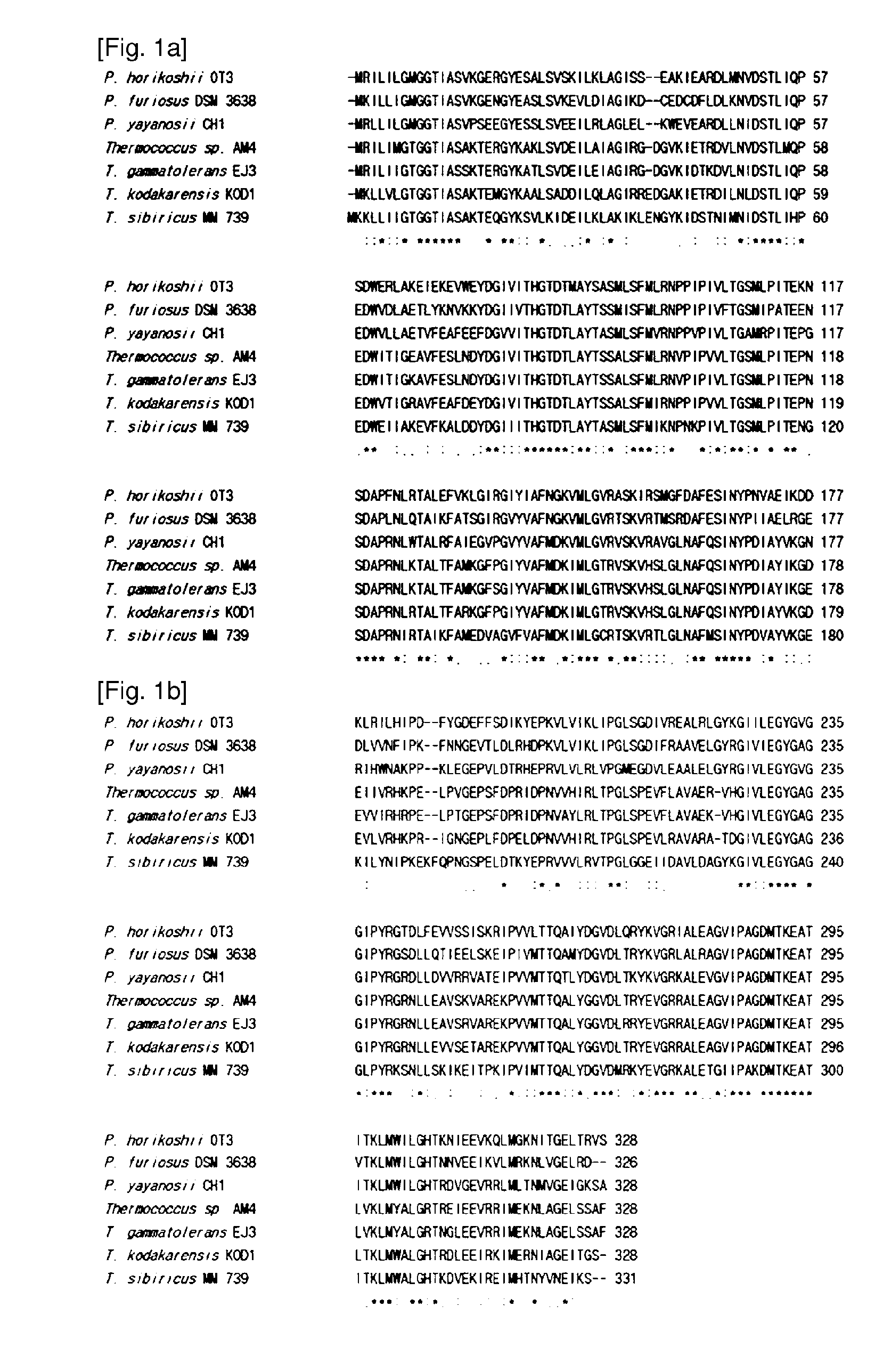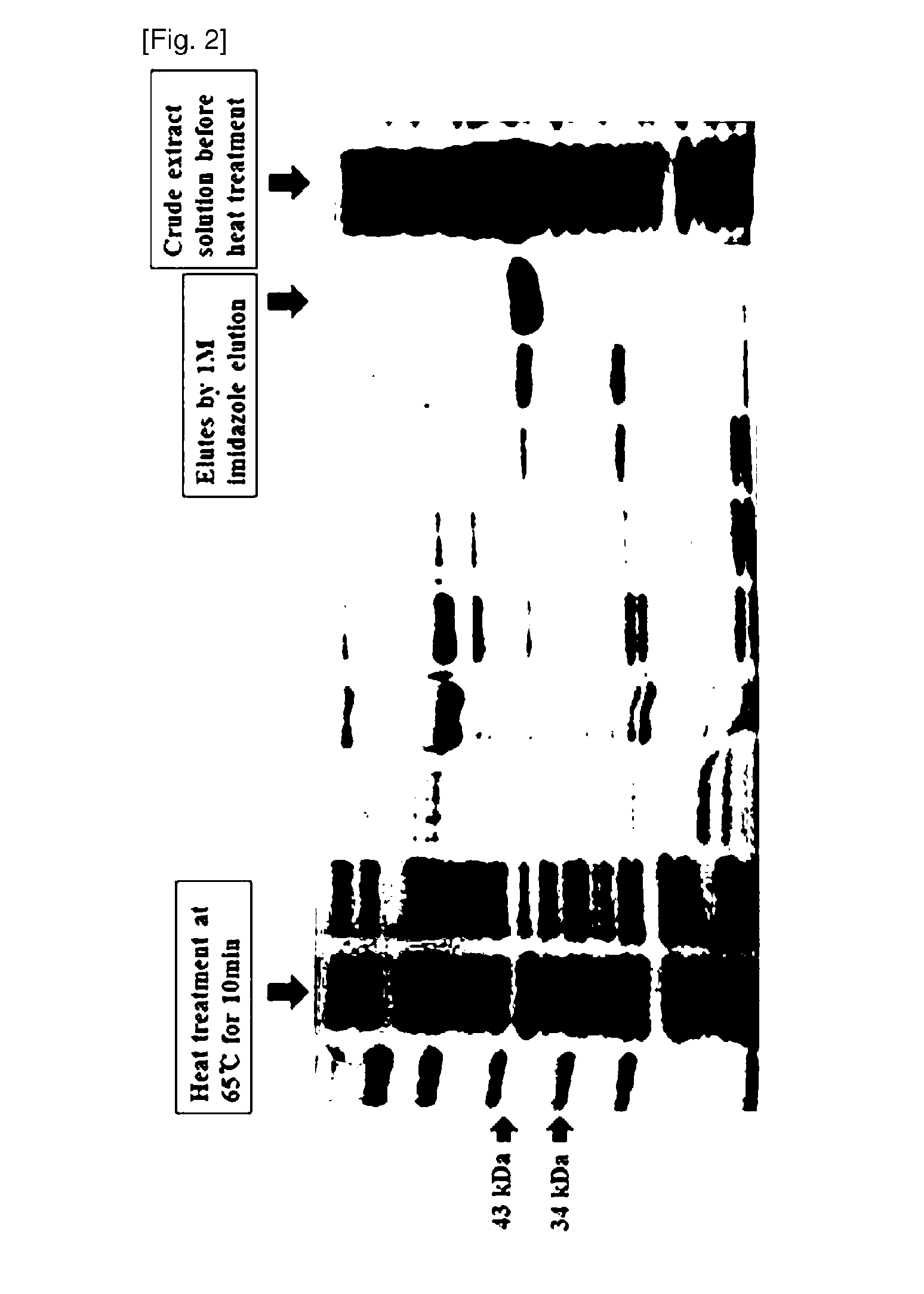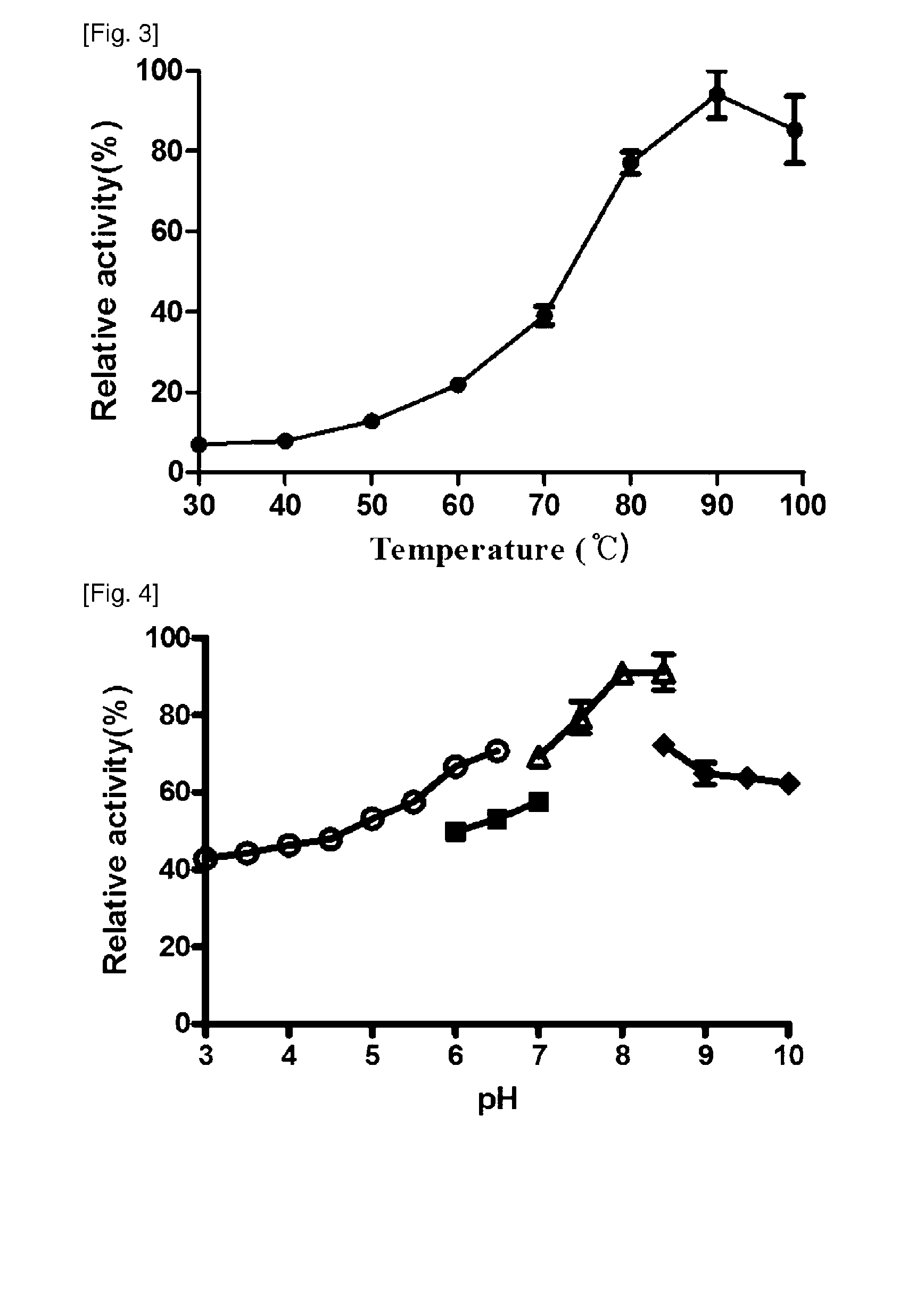Composition for breaking down l-asparagine comprising l-asparaginase, and production method for l-asparaginase
- Summary
- Abstract
- Description
- Claims
- Application Information
AI Technical Summary
Benefits of technology
Problems solved by technology
Method used
Image
Examples
example 1
Materials and Methods
[0038]1.1 Reagents
[0039]Reagents of the present invention were all guaranteed reagents (GR) purchased for their intended use. Restriction enzymes and other modification enzymes used for isolation and manipulation of DNA were purchased from Takara (Honshu, Japan) and Fermentas (Ontario, Canada). Plasmid DNA extraction kits were purchased from Solgent (Daejeon, Korea), and DNA polymerases, dNTPs, PCR buffers, etc. used in the polymerase chain reaction (PCR) were those purchased from Takara (Honshu, Japan) and those isolated and purified in the laboratory. Primers used in the PCR were purchased from Genotech (Daejeon, Korea). Protein purification of L-asparaginase was performed using Ni-Sepharose FF resin. Culture media of strains were mainly purchased from Difco (Missouri, USA), and antibiotics such as ampicillin, chloramphenicol, tetracycline, etc. were purchased from Sigma (Missouri, USA). The activity of L-asparaginase was measured using Nessler's reagent.
[0040...
example 2
DNA Isolation and Manipulation
[0044]2.1 Isolation and Purification of Plasmid DNA
[0045][Plasmid DNA was isolated by alkali-lysis method (Bimboim and Doly, 1979). E. coli harboring plasmids was cultured overnight in LB medium containing 100 μg / ml ampicillin and then cells were harvested by centrifugation (5,000 g, 15 minutes).
[0046]The harvested cells were suspended in TEG buffer (25 mM Tris. Cl, 50 mM glucose, 10 mM EDTA, pH 8.0) and reacted at room temperature for 5 minutes. 2 volumes (v / v) of 1% sodium dodecyl sulfate (SDS)-0.2N NaOH solution was added to the TEG buffer and dissolved at room temperature for 10 minutes. 1.5 volumes (v / v) of 3 M potassium acetate (pH 5.2) was added to the dissolved solution, left in ice for 10 minutes, and then centrifuged (5,000 g, 20 minutes).
[0047]The supernatant obtained by the centrifugation was transferred to a new centrifugation tube. Then, 0.6 volumes (v / v) of isopropanol was added to the supernatant to precipitate DNA, left at room temperat...
example 3
DNA Amplification and Sequencing
[0057]3.1 Synthesis of Primer
[0058]Primer design of L-asparaginase according to the present invention was performed by Genotech (Daejeon, Korea) based on the genomic sequence of Thermococcus kodakarensis KOD1 registered in National center for biotechnology information (NCBI). Moreover, the primer was designed such that a 6× his-tag was added to the C-terminus of a protein for protein purification using Ni-NTA affinity chromatography (TK1656 N-terminus primer: 5′-CGGGATCCCATATGAAACTTCTGGTTCTCG-3′; TK1656 C-terminus TEV primer 5′-CTGAAAGTACAGGTTCTCACTCCCAGTGATTTCGCC-3′).
[0059]3.2 PCR Conditions
[0060]PCR was performed using a PCR reaction mixture containing 10×Pfu DNA polymerase buffer (200 mM Tris-HCl (pH 8.8), 100 mM (NH4)2SO4, 100 mM KCl, 1% (v / v) Triton X-100, 1 mg / ml BSA, 20 mM MgSO4) 5 μl, 2.5 mM dNTP 2 μl, template DNA 1 μl (10 ng / μl), 10 pmol forward primer and 10 pmol reverse primer 1 μl, dimethyl sulfoxide (DMSO) 5 μl, dUTPase 1 μl, pfu DNA pol...
PUM
| Property | Measurement | Unit |
|---|---|---|
| Temperature | aaaaa | aaaaa |
| Temperature | aaaaa | aaaaa |
| Acidity | aaaaa | aaaaa |
Abstract
Description
Claims
Application Information
 Login to View More
Login to View More - R&D
- Intellectual Property
- Life Sciences
- Materials
- Tech Scout
- Unparalleled Data Quality
- Higher Quality Content
- 60% Fewer Hallucinations
Browse by: Latest US Patents, China's latest patents, Technical Efficacy Thesaurus, Application Domain, Technology Topic, Popular Technical Reports.
© 2025 PatSnap. All rights reserved.Legal|Privacy policy|Modern Slavery Act Transparency Statement|Sitemap|About US| Contact US: help@patsnap.com



